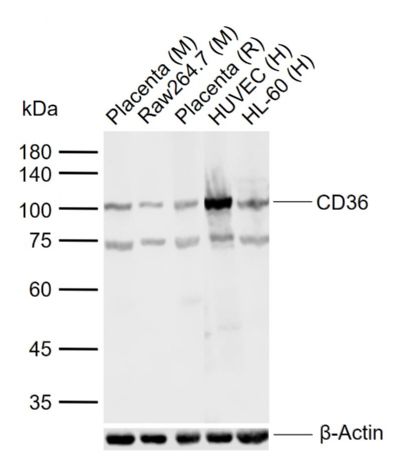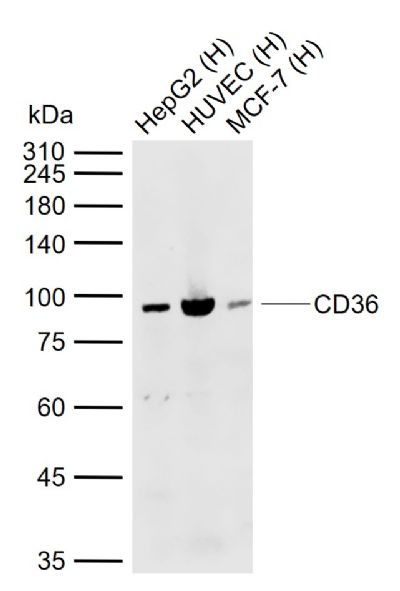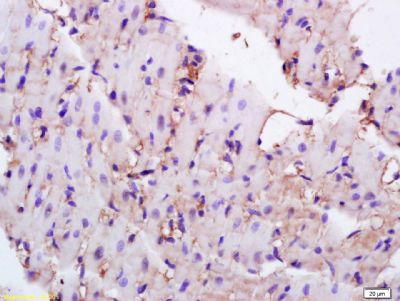Sample:
Lane 1: Mouse Placenta tissue lysates
Lane 2: Mouse Raw264.7 cell lysates
Lane 3: Rat Placenta tissue lysates
Lane 4: Human HUVEC cell lysates
Lane 5: Human HL-60 cell lysates
Primary: Anti-CD36 (SL1100R) at 1/1000 dilution
Secondary: IRDye800CW Goat Anti-Rabbit IgG at 1/20000 dilution
Predicted band size: 52 kDa
Observed band size: 100 kDa
Tissue/cell: rat heart tissue; 4% Paraformaldehyde-fixed and paraffin-embedded;
Antigen retrieval: citrate buffer ( 0.01M, pH 6.0 ), Boiling bathing for 15min; Block endogenous peroxidase by 3% Hydrogen peroxide for 30min; Blocking buffer (normal goat serum,SLC0005) at 37℃ for 20 min;
Incubation: Anti-CD36/PAS-4 Polyclonal Antibody, Unconjugated(SL1100R) 1:200, overnight at 4°C, followed by conjugation to the secondary antibody(SP-0023) and DAB(SLC0010) staining


